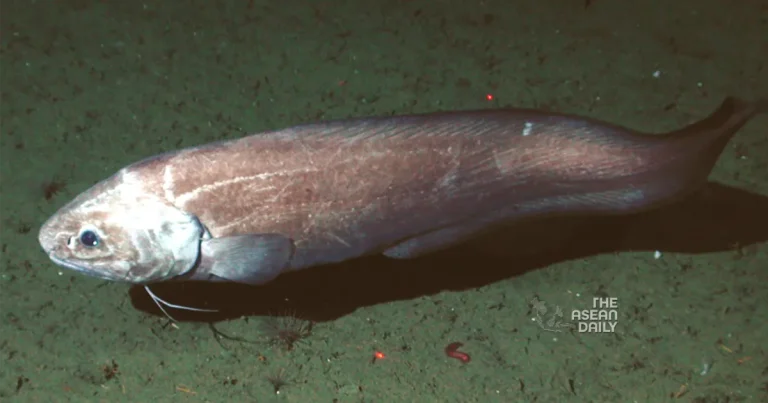3-10-2023 (KUALA LUMPUR) An angler has managed to hook a cusk eel, a fish typically found at extreme depths of the ocean, using nothing more than a rod and line. Even marine researchers are baffled by the catch, speculating that undersea earthquakes may have disrupted the habitat of these deep-sea creatures, compelling them to ascend to shallower waters.
An ichthyologist specializing in fish studies from Universiti Sains Malaysia (USM) is now seeking the angler’s cooperation in handing over the fish for scientific purposes, to be preserved in USM’s fish collection.
The astonishing part of the story is that fisherman Mohamad Hafiz Mohd Ariffin, 37, reeled in the cusk eel at a relatively shallow depth of 42 meters, approximately 16 nautical miles southwest of Penang island.
“I was using light fishing tackle to catch baitfish. My sonar indicated a featureless rocky bottom below. When I retrieved my line and saw the fish, I knew it was something different,” shared Ariffin. He further explained that upon returning to shore and showing the fish to other fishermen, nobody recognized the species either.
Ariffin caught the 30cm-long fish last Saturday at around 10 am and has since been keeping it on ice. The cusk eel exhibits a pointed tail resembling that of an eeltail catfish (sembilang), while its head bears a resemblance to a common croaker (gelama), complete with two prominent barbels extending from its pelvic fin.
Fish residing in the depths of the ocean, where sunlight is scarce, rely on barbels to “taste” the water and locate food sources.
Dr. Khaironizam Md Zain, an ichthyologist at USM, expressed his astonishment upon being presented with photographs of the cusk eel, admitting that it was the first time he had encountered an actual specimen of this rare fish.

“Most cusk eels are deep-sea fish, predominantly found in the Atlantic and eastern Pacific regions. Interestingly, their presence in the western Pacific and Indian oceans is relatively rare. I suspect this particular species has a distribution in the Indo-Pacific region,” Dr. Zain explained.
He further elaborated that there are abyssal zones (ranging from 4,000 to 6,000 meters) near West Sumatra and the Philippines, where cusk eels are known to thrive.
“It is plausible that these fish occasionally migrate to shallower areas, possibly in search of food or due to seismic activities occurring in the Indian Ocean and western Pacific region,” Dr. Zain added.
The appearance of deep-sea fish within reach of fishermen’s nets and hooks has long been associated with the anticipation of earthquakes, particularly in Japan. One theory suggests that escaping gases, electromagnetic disturbances, and temperature fluctuations resulting from seismic events might prompt deep-sea fish to seek refuge in shallower waters.
However, a comparative analysis published in 2019, examining over 300 instances of deep-sea fish sightings and earthquakes in Japan between 1928 and 2011, failed to establish any correlation between the two phenomena.




